How to Open a Digital Safe Without a Key
Restore power to the numeric keypad
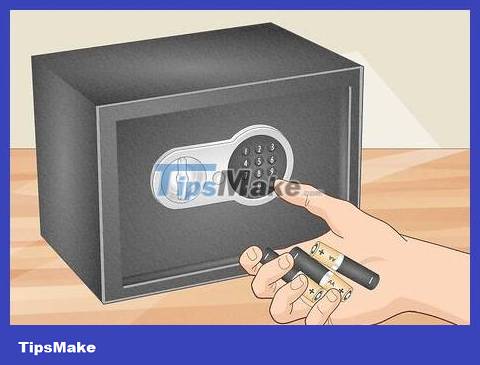
Charge or replace the battery if you don't have the key. Some digital safes have a keyboard for you to enter the password, and come with a mechanical key to open it. If the battery on the safe's keypad is dead and you don't have the key with you, replace or charge the keypad's battery.
If you don't have a key, you can open the digital safe using the electronic keypad.
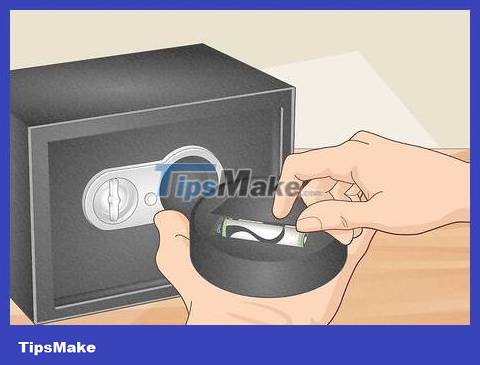
Find the keyboard's battery tray and open it. Look around or above the numeric keypad for the battery tray. The battery tray is usually located below the keyboard. You can use your hands to open the latch and remove the battery cover.
With some digital safes, you will need to turn a screw to remove the battery tray.
Check to make sure the battery tray is not damaged or has any missing parts. If you see these signs, you need to take the safe to a professional to open it.

Replace with correct battery type and voltage. After opening the battery tray, you need to take out the old battery. Then, install a new battery of the same type as the old battery in the original position and close the battery tray cover.
The numeric keypad will light up once power is restored.

Plug in the safe's power supply (if available). If the safe has a USB slot, power port, or 9-volt battery tray on the keypad, plug it in or insert the battery. Leave the numeric keypad charging for at least 10 minutes to reset the power, then try turning it on again.
If your safe has a USB charging port, you can use any USB charging cord.
Some safes use a separate power cord to charge the keyboard, but you can try a different cord if the plug fits into the charging port.
The charging light or light below the keyboard will activate when power is restored.
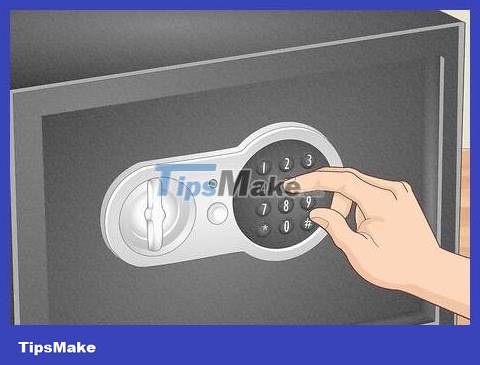
Enter the password to open the safe after power is restored. After the numeric keypad is connected to the power source, enter the password to open the safe. When the locking mechanism is disconnected, the safe will open immediately.
If you forget your password, try resetting the safe.
Reset the safe
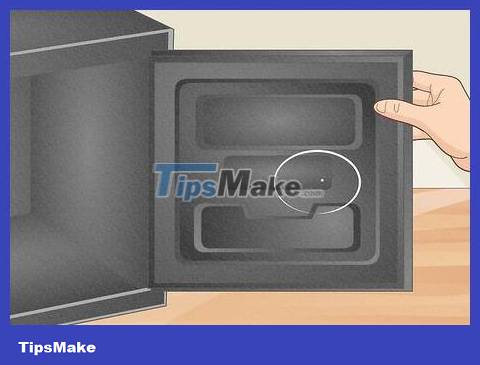
Look behind the door or the digital part of the safe. Look for small holes or gaps located behind or underneath the safe. Shine the flash through the hole and find the back of the control panel.
You will see wires and electronic components behind the control panel.
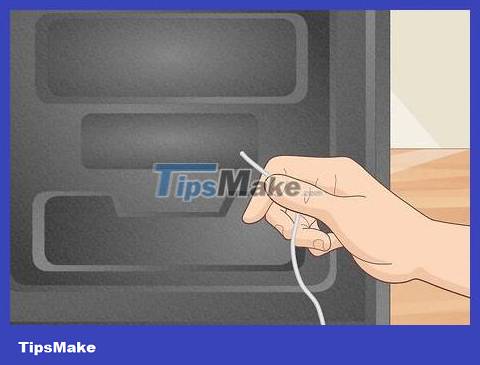
Thread the coat hanger through one of the safe's holes. Break a coat hanger into a long, thin metal wire. Insert the hanger into one of the openings to access the control panel.
You need to be careful that the coat hanger does not get stuck in the hole, otherwise the electronic keypad may be damaged and cannot be reset.
Tip: If you don't have a metal hanger or the hole is too small for the hanger, find wire that's small and strong enough to reach the panel.
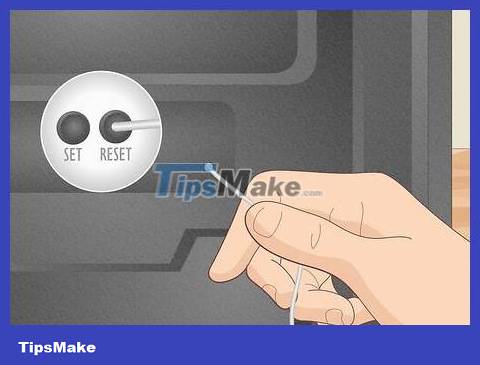
Press the Reset button located inside the safe's numeric keypad. Shine a flash to find the Reset button on the back of the control panel and thread the metal wire there. This is usually a small black button with a 'Reset' label next to it. You need to use the end of a coat hanger/wire to press this button.
The control panel will light up or 'beep' when you press the Reset button.

Enter the new password into the front numeric keypad. After pressing the Reset button, you will be able to enter the new password into the front numeric keypad. Enter a password that you can remember into the numeric keypad.
Write down your password or save it to your phone in case you forget.
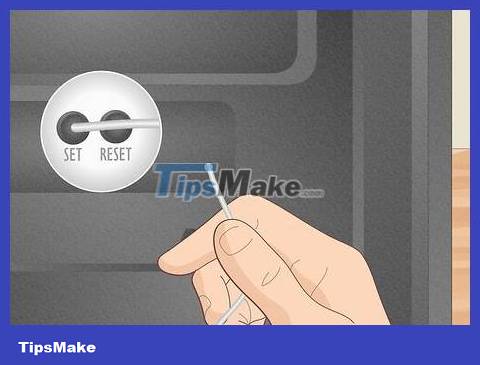
Confirm the new password by clicking the Set button next to the Reset button. Shine the flash through one of the openings in the safe and find the 'Set' button next to the 'Reset' button just now. Use the metal wire tip to press this button to confirm the password you just entered.
It is possible that the control panel will light up or 'beep' once the new password is confirmed.
Sometimes the Set button is unlabeled or has a check mark on the front of the control panel.
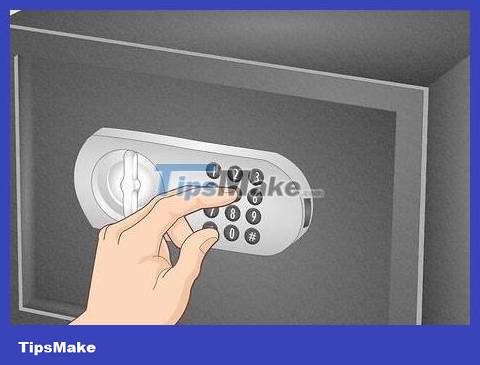
Open the safe by entering the new password. Unplug the metal wire from the safe and enter the new password into the control panel on the front of the safe. Once the locking mechanism is disabled, you will be able to open the safe door.
Other solutions

Insert the tip of the knife into the keyhole and shake to open the lock. If the digital safe has a mechanical lock hole, use a hard knife to poke the sharp tip into it. Wiggle the tip of the knife back and forth to force the locking mechanism open. If successful, you will be able to open the safe door.
This method is often effective with low-cost safes.
It is likely that this solution is also effective on safes that combine keys and electronic keyboards.
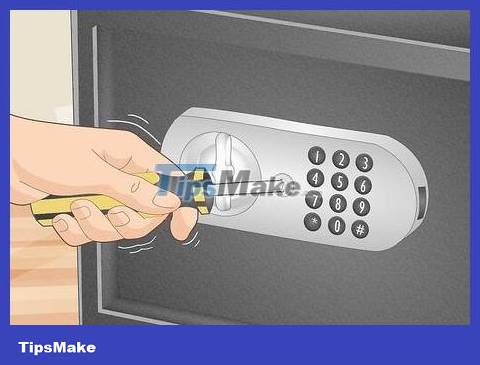
Insert the screwdriver into the lock hole and rotate to break the lock. Place the safe on a flat surface and insert a flathead screwdriver into the keyhole. Turn the screwdriver back and forth counterclockwise until you hear or feel the locking mechanism break. Then, take out the screwdriver and open the safe.
After damaging the locking mechanism with a screwdriver, you may not be able to lock the safe anymore.
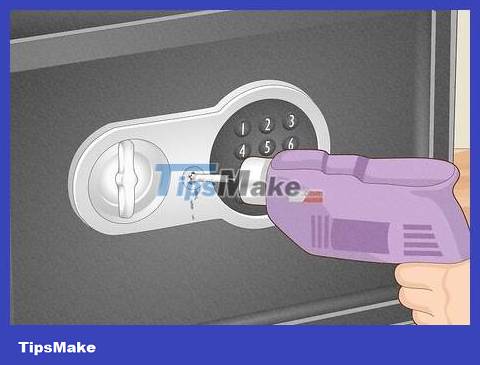
Drill through the mechanical key hole. If all else fails, this is the last resort. You need to use an electric drill with a drill bit powerful enough to penetrate the metal. Drill the lock hole on the safe until the drill penetrates and destroys the locking mechanism. After that, you will be able to open the safe door.
Note: Safes are not easy to drill, so this may damage the drill.
You should read it
- How to Open an Acsm File on PC or Mac
- Should you choose a digital camera?
- How to open PowerPoint in safe mode
- All problems with starting Windows in Safe Mode
- How to choose a semi-professional digital camera
- 5 great open source tools that keep your personal data safe
- How to open the car door properly and safely
- How to use the Safe Boot option of Mac
May be interested
- How to use the Safe Boot option of Mac
 apple has provided the safe boot option (sometimes called safe mode) since jaguar (os x 10.2.x). safe boot may be the main troubleshooting step when you encounter problems with your mac.
apple has provided the safe boot option (sometimes called safe mode) since jaguar (os x 10.2.x). safe boot may be the main troubleshooting step when you encounter problems with your mac. - How to turn on Safe Mode on Android
 if in the process of use, users discover that your device running android (smartphone or tablet) is frequently stalled, sluggish or battery problems cause the battery to run out quickly ... users can access go to safe mode to check if the above problems still happen?
if in the process of use, users discover that your device running android (smartphone or tablet) is frequently stalled, sluggish or battery problems cause the battery to run out quickly ... users can access go to safe mode to check if the above problems still happen? - Do you have the potential to become a digital nomad?
 most people never take the leap into location freedom because they fear failure. but a quick test will reveal whether you're suited to the nomadic lifestyle.
most people never take the leap into location freedom because they fear failure. but a quick test will reveal whether you're suited to the nomadic lifestyle. - Backup photos online to your hard drive for safe storage
 who can know how safe online images will be? please backup your photos and their related metadata to the hard drive to stay safe.
who can know how safe online images will be? please backup your photos and their related metadata to the hard drive to stay safe. - Safe ways to withdraw USB
 many people have a habit of copying data from usb to the computer and then unplugging usb without disconnecting. this can result in data loss or damage, and speed up usb failure. please refer to the following ways to turn off usb to protect your data and usb.
many people have a habit of copying data from usb to the computer and then unplugging usb without disconnecting. this can result in data loss or damage, and speed up usb failure. please refer to the following ways to turn off usb to protect your data and usb. - How to Boot into Safe Mode on Mac OS X or Windows
 to enter safe mode on your mac computer, press and hold the shift key as it boots up. in windows 10 and windows 8, you can hold shift and click restart to open the troubleshooting menu and select safe mode. for windows 7 and earlier, press...
to enter safe mode on your mac computer, press and hold the shift key as it boots up. in windows 10 and windows 8, you can hold shift and click restart to open the troubleshooting menu and select safe mode. for windows 7 and earlier, press... - How to Open Acsm Files on PC or Mac
 today's tipsmake will show you how to use adobe digital editions to open .acsm (adobe content server message) format e-books on windows and macos.
today's tipsmake will show you how to use adobe digital editions to open .acsm (adobe content server message) format e-books on windows and macos. - How to open a VCF file on the computer
 how to open a vcf file on the computer. vcf file is a regular vcard file to store information such as contacts, phone numbers, mail addresses, etc., compressed in a compact and safe size. if you do not know how to open vcf file on your computer, please refer to the article below!
how to open a vcf file on the computer. vcf file is a regular vcard file to store information such as contacts, phone numbers, mail addresses, etc., compressed in a compact and safe size. if you do not know how to open vcf file on your computer, please refer to the article below! - How to boot into Safe Mode on Mac
 if your mac is having difficulty starting or you are experiencing startup problems, you should start your mac in safe mode to try to identify and resolve the problem. we'll show you how to do it.
if your mac is having difficulty starting or you are experiencing startup problems, you should start your mac in safe mode to try to identify and resolve the problem. we'll show you how to do it. - Create digital art using existing apps!
 digital art is a vague definition, with no set rules for what constitutes a work of art. most of us have access to amazing apps that make it easy to create stunning digital art.
digital art is a vague definition, with no set rules for what constitutes a work of art. most of us have access to amazing apps that make it easy to create stunning digital art.










 The world's longest undersea power transmission cable
The world's longest undersea power transmission cable Should I choose NanoCell or OLED TV technology?
Should I choose NanoCell or OLED TV technology? What is QD-OLED? Why is QD-OLED better than OLED or LCD TV?
What is QD-OLED? Why is QD-OLED better than OLED or LCD TV? Learn about Xiaomi Smart Home
Learn about Xiaomi Smart Home What is SmartThings? How does SmartThings work?
What is SmartThings? How does SmartThings work? Is Siri or Alexa the most suitable assistant for a smart home?
Is Siri or Alexa the most suitable assistant for a smart home?